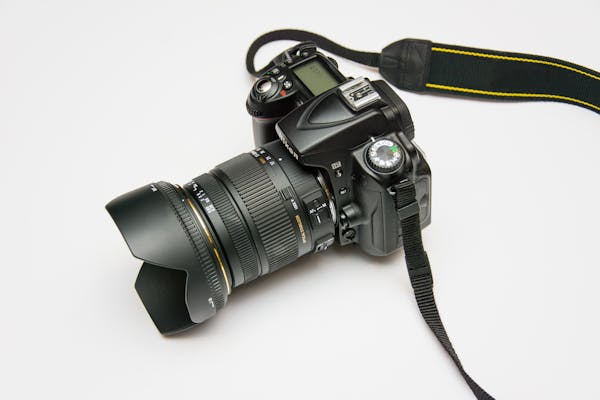Photography is an art form that captures the essence of moments, emotions, and beauty. As technology evolves, so do the tools available to photographers. Digital Single-Lens Reflex (DSLR) cameras have been a cornerstone in the world of photography, offering a blend of flexibility, image quality, and advanced features. In this article, we will delve into the world of DSLR cameras, exploring their advantages, features, and the best DSLR camera for photography enthusiasts and professionals alike.
Understanding DSLR Cameras
1. What is a DSLR Camera?
A DSLR camera combines the optics and mechanisms of a single-lens reflex camera with a digital imaging sensor. The defining characteristic of a DSLR is the reflex design scheme, which uses a mirror to direct light from the lens to either the viewfinder or the image sensor. This allows photographers to see exactly what the lens sees, providing accurate framing and focus.
2. Key Features of DSLR Cameras
- Interchangeable Lenses: One of the major advantages of DSLRs is the ability to switch lenses. This flexibility allows photographers to use various lenses to achieve different perspectives, from wide-angle to telephoto.
- Optical Viewfinder: The optical viewfinder provides a real-time, clear view of the scene, which is crucial for composing shots, especially in bright conditions where electronic displays may struggle.
- Large Image Sensors: DSLRs typically feature larger image sensors compared to compact cameras or smartphones. This results in better image quality, low-light performance, and depth of field control.
- Manual Controls: DSLRs offer extensive manual controls, giving photographers full control over exposure settings, focus, and more. This is essential for achieving creative effects and precise adjustments.
- Durability and Ergonomics: DSLRs are often built to withstand various environmental conditions, making them durable choices for outdoor photography. Their ergonomic design also ensures comfortable handling during extended shoots.
The Evolution of DSLR Cameras
1. Early Beginnings
The first digital SLR camera was introduced in the late 1980s, marking the beginning of the digital photography revolution. Since then, DSLRs have evolved significantly, with advancements in sensor technology, image processing, and connectivity.
2. The Rise of Full-Frame Sensors
In the early 2000s, full-frame sensors became more accessible, offering improved image quality and low-light performance. These sensors are the same size as a 35mm film frame, providing a wider field of view and better control over depth of field.
3. The Impact of Mirrorless Cameras
The advent of mirrorless cameras introduced new competition to DSLRs. Mirrorless cameras offer similar image quality and features but in a more compact form factor. Despite this, DSLRs remain popular due to their optical viewfinders, robust build, and extensive lens ecosystems.
Choosing the Best DSLR Camera for Photography
Selecting the best DSLR camera for photography depends on various factors, including skill level, budget, and specific photographic needs. Below, we explore some of the top considerations and recommendations for different types of photographers.
1. For Beginners
For those new to photography, an entry-level DSLR provides a balance of affordability and functionality. Key features to look for include user-friendly interfaces, guide modes, and built-in tutorials.
- Canon EOS Rebel T8i (EOS 850D): The Canon EOS Rebel T8i offers a 24.1-megapixel APS-C sensor, excellent image quality, and a range of creative filters. Its vari-angle touchscreen and intuitive controls make it an ideal choice for beginners.
- Nikon D3500: The Nikon D3500 is known for its simplicity and ease of use. With a 24.2-megapixel APS-C sensor and long battery life, it’s a reliable option for those starting their photography journey.
2. For Enthusiasts
Enthusiast photographers often seek more advanced features, better image quality, and greater creative control. Mid-range DSLRs provide a perfect blend of performance and value.
- Canon EOS 90D: The Canon EOS 90D boasts a 32.5-megapixel APS-C sensor, 4K video recording, and fast continuous shooting. Its weather-sealed body and extensive controls make it a versatile choice for various genres.
- Nikon D7500: With a 20.9-megapixel APS-C sensor and 4K video capability, the Nikon D7500 is a powerful tool for enthusiasts. Its robust autofocus system and deep grip enhance the shooting experience.
3. For Professionals
Professional photographers require top-tier image quality, durability, and advanced features. Full-frame DSLRs are the go-to choice for professionals, offering superior performance in various conditions.
- Canon EOS 5D Mark IV: The Canon EOS 5D Mark IV features a 30.4-megapixel full-frame sensor, exceptional dynamic range, and Dual Pixel autofocus. It’s a workhorse for professionals in fields like portrait, wedding, and landscape photography.
- Nikon D850: The Nikon D850 offers a 45.7-megapixel full-frame sensor, impressive detail resolution, and high-speed performance. It’s a favorite among professionals for its versatility and image quality.
4. For Sports and Wildlife Photography
Photographers specializing in sports and wildlife need fast autofocus, high frame rates, and weather-sealed bodies to capture dynamic action.
- Canon EOS-1D X Mark III: The Canon EOS-1D X Mark III is a flagship DSLR with a 20.1-megapixel full-frame sensor, 16 fps continuous shooting, and advanced autofocus capabilities. It’s designed for demanding conditions and fast-paced photography.
- Nikon D6: The Nikon D6 offers a 20.8-megapixel full-frame sensor, 14 fps burst rate, and a robust build. It excels in low-light situations and provides precise autofocus tracking.
Advantages of Using a DSLR Camera
1. Superior Image Quality
DSLR cameras are known for their large sensors, which provide excellent image quality. The ability to capture fine details, rich colors, and a wide dynamic range makes DSLRs ideal for professional and enthusiast photographers.
2. Versatility and Creative Control
With interchangeable lenses and extensive manual controls, DSLRs offer unparalleled creative freedom. Photographers can experiment with different lenses, such as macro, wide-angle, and telephoto, to achieve unique perspectives. Manual controls allow for precise adjustments to exposure, focus, and white balance.
3. Optical Viewfinder
The optical viewfinder in a DSLR provides a direct optical path to the scene, ensuring a clear and real-time view. This is particularly beneficial in bright outdoor conditions, where electronic displays may be challenging to see.
4. Durability and Build Quality
DSLRs are often built to withstand harsh conditions, making them durable choices for outdoor and adventure photography. Weather-sealed bodies protect against dust, moisture, and temperature extremes, ensuring reliable performance in various environments.
5. Long Battery Life
DSLRs generally offer longer battery life compared to mirrorless cameras. This is due to the absence of an electronic viewfinder and the efficient use of power. This advantage is crucial for extended shoots and travel photography.
The Future of DSLR Cameras
While mirrorless cameras continue to gain popularity, DSLRs remain a vital part of the photography landscape. Manufacturers are continually innovating, offering new models with improved sensors, processors, and features. The future of DSLRs may involve further integration of mirrorless technology, such as hybrid viewfinders and enhanced autofocus systems.
Conclusion:
Choosing the best DSLR camera for photography involves considering various factors, including budget, skill level, and photographic needs. Whether you’re a beginner looking for an affordable entry-level option or a professional seeking top-tier performance, there’s a DSLR camera that suits your requirements.
For those starting their photography journey, the Canon EOS Rebel T8i and Nikon D3500 offer excellent image quality and ease of use. Enthusiasts can explore more advanced options like the Canon EOS 90D and Nikon D7500, which provide greater creative control and versatility. Professional photographers will appreciate the high-resolution sensors and durability of the Canon EOS 5D Mark IV and Nikon D850.
For sports and wildlife photography, the Canon EOS-1D X Mark III and Nikon D6 deliver fast autofocus, high frame rates, and rugged build quality, making them ideal choices for capturing dynamic action.
Ultimately, the best DSLR camera for photography is one that aligns with your specific needs and preferences. As technology continues to evolve, DSLR cameras will remain a reliable and powerful tool for photographers worldwide, capturing stunning images and preserving memories for generations to come.




